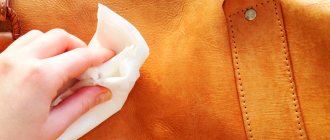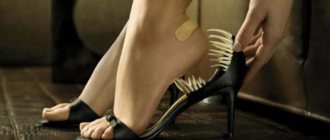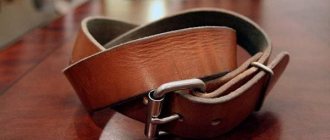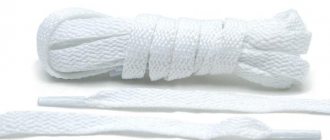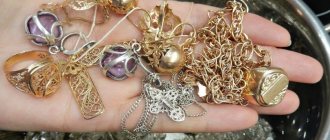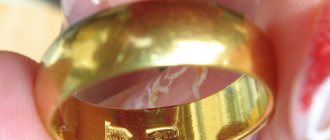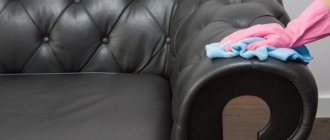Shoe Features
The main requirement that was initially placed on such boots was their strength. To ensure this, manufacturers use rough leather for shoes. This has become one of the reasons for the unpleasant moments associated with ankle boots: they often rub the legs. Another reason is the incorrect selection of shoes.
Regardless of the reason, the pressing question is: how to soften the skin or break in shoes to rid your feet of wounds.
To get rid of chafing, there are two main actions that you will have to perform with your shoes. The boots need to be broken in, and the material from which they are made needs to be made softer.
We'll tell you how to make these manipulations effective.
Wax
How to wear ankle boots? Softening the shoes can also be achieved with an ordinary candle. The cinder is melted and liquid wax is applied to problem areas.
Those who are trying to soften the skin in this way should know that it is impossible to apply only melted wax, because it is hot, which means it can damage the skin.
Wax with paraffin is applied a few minutes after melting. The dried substance is wiped with a napkin and polished.
Peculiarities
How to break in ankle boots for a beginner? Shoes must be very durable, so they are made of rough leather. Because of this, ankle boots rub your legs a lot. But it’s not just the hard material that’s to blame for discomfort; boots can also be the wrong size.
Constant rubbing is not the most pleasant thing; non-healing wounds make life very difficult and can cause serious trouble. In order for shoes to stop rubbing, you need to find ways to break in the boots.
Regular breaking in does not always give results, so you need to use tricks. Let's talk about them.
Where else could there be damage?
You already know how to break in ankle boots, but all methods mainly concern the heel, and shoes can rub not only there. The person experiences discomfort in the toe, foot, midsection, or other areas.
It is impossible to wear uncomfortable shoes for a long time, especially for several days, so owners are looking for ways to soften the harsh material.
Types and symptoms of calluses
The former are the result of bone destruction and appear at fracture sites. Such pathologies can only be eliminated surgically.
The latter are keratinized areas of the epithelium and develop due to prolonged friction of a body part on a hard surface.
Among this group calluses are distinguished:
- Watery, or wet. They look like a transparent bubble with liquid contents inside, accompanied by pain and unpleasant sensations.
- Dry (hard) - layers of rough skin, which are the result of prolonged mechanical impact on the problem area. The lesions are painless but may crack and cause pain.
- Corns are a variation of the previous group. They do not have clearly defined boundaries and affect the plantar area of the foot.
- Rod-shaped, having a shallowly located rod inside.
- Infected. They are observed when the integrity of the callus is violated, an infection gets inside it, and there is an inflammatory process.
Skin tumors cause considerable discomfort when walking, create an unsightly cosmetic effect and therefore require immediate measures to eliminate them.
A person who has rubbed a callus on his foot often notes:
- Itching, burning sensation, redness of the skin around the lesion. This indicates the appearance of a wet callus. There may be blood due to prolonged rubbing.
- Thickening of the skin area, change in color, decreased sensitivity. These signs accompany corns and hard calluses.
- Acute pain when pressing, the presence of a depression in the center of the lesion, which is typical for the rod variety.
- Pain in the absence of mechanical action. The symptom is observed in the presence of an inflammatory process. Abscesses may form, the temperature of the affected limb or the whole body may increase, and general malaise may be felt - all this is associated with infection getting inside the wound.
There are several ways to help break apart boots.
Using insoles
Insoles will be especially useful if your boots are a little big.
IMPORTANT! Even if there is very little free space, the leg will be mobile. Repeated contact with the boot leather leads to chafing.
The area around the back seam is especially problematic. That's why a wound appears above the heel.
- It is necessary to buy thick insoles, the size of which is larger than required.
- They are inserted into shoes, starting from the toe, and carefully distributed inside the shoe.
- The excess insole rises up the heel of the shoe and thus covers the seam.
Now, having put on the ankle boots, it is possible to secure the foot firmly, and walking in them does not cause the same inconvenience.
Sock
A sock becomes another protection for the foot. You will need a thick wool sock, or two cotton ones. The principle and purposes of its use are the same as those of insoles. The boots are worn with thick socks so that the material stretches during use and the skin of the legs suffers less.
Lacing
You can keep your foot tightly in the boot using lacing. Only it should be quite dense, tight enough so that the foot does not move and rub against the hard skin.
Advice! If you take off your shoes without untying your shoes, the lace will become loose. Without proper fixation, you are more likely to chafe the skin of your feet.
First aid
It turns out in the case of a wet callus. The goal is to minimize the risk of infection. Measures to provide first aid to the victim include the following actions:
- Treating the blister with antiseptic agents. For this, betadine, chlorhexidine, and iodine are used.
- Opening the callus. The puncture is made with a clean new needle from a disposable syringe within the next 24 hours after the blister forms. The manipulation area is pre-disinfected with an antiseptic.
- Dressing the resulting wound. The puncture site is treated with tetracycline or erythromycin ointment, then a sterile bandage is applied. This helps reduce the risk of further damage and infection.
To reduce the mechanical impact on the problem area, it is recommended:
- Change your shoes. New shoes should not rub the damaged area.
- Change your socks: This will help reduce foot moisture.
- Cover the callus with a bactericidal plaster. It will prevent the penetration of pathogenic microorganisms and allow the skin to breathe.
- You can apply a bandage. The dressing material must be sterile, it must be changed daily, and must not be contaminated.
The factor that caused the development of callus must be eliminated, otherwise the situation will only worsen and a positive result will not be achieved.
Caring for leather boots
The first thing you need to do when returning from a hike is to wipe the boots with a damp cloth, cleaning them from dirt or dust. The same applies to the daily maintenance of shoes if they are worn every day during the slushy season. Salt stains on the surface of the product are especially harmful, so cleaning must be carried out without waiting for them to appear.
It is not recommended to wash shoes under running water. After cleaning, if the shoes are wet, stuff newspaper inside, this speeds up the drying process. You can use electric dryers, but only after removing the salt from the surface of the skin! Quickly forming, salt crystals destroy the skin. At night, the boots are lubricated with a nourishing and water-repellent composition.
You can buy similar impregnation sprays for military boots at the Militarka military store.
If the boots do not contain lining with antibacterial properties, the inner surface after removing the insoles must be regularly treated with special aerosols or sprays and ventilated. This will prevent fungal infections from developing. Insoles, of course, should be washed before treatment and treated with compounds separately, after drying. The time of effective action of the product is indicated on each cylinder. After it expires during the wearing period, the treatment should be repeated.
If the seams of the boots gradually begin to leak water, this can be dealt with using available modern means. Shoe wax, liquid silicone-based compounds or other suitable preparations will help.
Deodorant
This may sound strange to some, but shoes shouldn't smell bad. It should not emit any unpleasant odor at all, and any stench from shoes is only a consequence of the untidiness of its owner. Even if these are sports sneakers or combat boots . We change socks every time we take off and put on shoes and use hard desiccs. Buy any good solid disinfectant at the nearest supermarket (Adidas, Rexona) and smear your feet with it before putting on your socks . You can also “walk” with disinfectant on the insoles a couple of times. This will make it impossible for bacteria to live in this environment and, as a result, will remove any odor.
If you have already dirty your shoes , wash them, including with hydrogen peroxide. Nothing will come unglued, and all microbes will die.
How to soften shoe material at home
To speed up the process of softening the material, you can additionally influence it.
Alcohol based solution
A liquid based on alcohol is suitable for this. This could be cologne, alcohol tinctures, vodka solution, etc.
- The liquid is applied to the inside of the boot leather. Moisten as much as possible.
- You can also apply it to your socks.
- Then they put on the ankle boots and walk in them for a while until they dry completely.
Mechanical impact
The usual, proven method will also help. The skin is literally broken by tapping the most problematic areas.
Advice! Use a wooden mallet. And when working with a metal tool, wrap it in a cloth. This will help maintain the quality of the leather but make it softer.
Effect of temperature
Some shoe owners successfully use heat treatment of leather.
Heating
The material is heated (steam from a kettle, hairdryer, steamer). Without allowing the boots to cool down, they are put on thick socks and walked like this for some time. Under the influence of heat, the skin will become less rough and tough. Moreover, it will stretch faster, repeating the shape of the foot.
Cooling
You can use another option - exposure to cold, more precisely, ice water.
You need to insert a strong cellophane bag into the shoe. The bag is filled with water, making sure that the bag fills the entire interior space of the shoe. In this form, the shoes are sent to the freezer. Then the laws of physics will come into play. The water will freeze and require more volume, so when it turns into ice, it will stretch the skin.
How to break in suede shoes?
Suede is a soft and flexible material, so getting rid of discomfort in shoes is usually not difficult. You can wear shoes made from natural suede by putting them on slightly damp socks and walking until they dry. However, suede is not only elastic, but also very capricious, so you need to avoid contact with water on the outside of the product.
Instead of water, you can use beer - this method is more effective and allows you to stretch your shoes one size larger, but after this the shoes need to be ventilated in the open air. Another good way to prevent calluses on your heels and toes is to use castor oil. The main rule is not to overdo it, otherwise the question of how to break in shoes that are too tight will take a completely different direction. After all, it will become too big.
Choosing shoes
How to wear Faraday boots or any other boots is more or less clear. But often shoes rub your feet, not because they are “from the wrong brand,” but because they are not the right size. If you choose the right boots, you won’t have to think about how to break in Faraday boots or any other boots.
Before purchasing, you need to try on all army boots with a thick woolen sock. The store may not have wool socks, so you need to take it with you.
Well, of course, you need to buy ankle boots from trusted manufacturers, whose quality of tailoring and materials you are confident in.
How to choose ankle boots so they don't chafe
Using these methods, you will be able to break apart the ankle boots. But this will take some time, during which you will have to endure inconvenience. Choosing the right shoes will help reduce discomfort .
- When purchasing, try on a thick wool sock.
- If you don’t have such a sock when trying on, choose those that are 1 size larger than you need.
- Give preference to trusted manufacturers who will ensure the quality of materials and products as a whole.
Now you know how to stretch ankle boots, making them not only practical, but also comfortable to use. And most importantly, you can protect your feet from wounds, abrasions and abrasions even with prolonged use of the products. All the methods that we talked about were tested in practice and really helped in working with ankle boots. We hope your shoes become comfortable too!
How to sew a button on a leg?
DIY wooden beads
Modern solution
Nowadays it’s easier to take uncomfortable shoes to a shoe repair shop, where they will quickly deal with the problem. Soldiers will not be able to give their ankle boots to specialists, but people who buy boots for sports can easily do so.
Even soldiers on their day off can go to a hardware store and buy chemicals that soften rough skin. They are sold in the form of sprays and creams and are very convenient to use.
Hand and face creams also help soften rough skin. The production uses leather that, albeit vaguely, resembles human skin, so the creams will be slightly softened.
Tips before your first walk
Before you decide to go outside in new shoes, do a few simple manipulations:
- Lubricate hard backs with damp soap or a wax candle;
- Apply a little castor oil to the inner surfaces trimmed with leather;
- Bring with you a band-aid and a spare pair of your usual comfortable shoes.
Apply the patch in advance in places where damage to the skin of the legs is most likely
To break in shoes that are too tight, sometimes you have to resort to additional measures to ease the discomfort of wearing them in and speed up the stretching process.
Glycerol
How to wear ankle boots in an unusual way? Many leather products are cared for with products that contain glycerin. It is considered an alcohol compound, but is not aggressive, so it is good for the skin. Natural leather softens and stretches under the influence of glycerin. More often than not, the product is much more effective than industrial shoe polishes.
Glycerin is applied to the area that is rubbing the skin and left until absorbed. It is also used to rub hardened areas on the surface of shoes. After absorption, wipe off the excess with a napkin while polishing the skin. The effect is visible immediately, the boots become soft and the skin becomes supple.
Socks
How to wear ankle boots if you don’t have anything at hand? A familiar sock will come to the rescue. It is better to choose a cotton or woolen item. Socks serve the same role as insoles - they protect the feet from friction and serve as an additional layer. The underwear stretches along with the shoes, while the skin remains unharmed.
Since the leather on the boots is rough, constant contact with the skin causes the hair on the legs to wear out. For women this is even a virtue, but men do not like the effect. Long socks that are higher than your ankle boots will eliminate the problem, and your hair will remain in place.
Heating method
Gentle heating will help make the boots softer. This is done using a hair dryer, heater or boiling kettle. Problem areas are warmed up, boots are put on and worn out. Moreover, it is better to do this step by step:
- Heat the toe of the boot for 15 minutes, if using a hairdryer, and wear it;
- Then heat the heel a little longer and walk again;
- Then the rise, side joints and other parts.
Warmth makes the skin softer. While you wear it, it stretches. It cools down and takes the shape of a leg.
